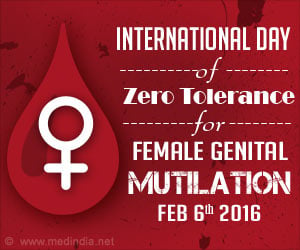About 68 million girls are at risk of genital mutilation if it persists at its current pace in countries where it is prevalent, reports World Health Organization (WHO).

Most of the people affected live in about 30 countries in Africa, the Middle East, and Asia, where the practice is bound up in cultural or religious traditions.
Female genital mutilation is the removal of some or all of the external female genitalia.
"Countries with the highest prevalence among girls and women aged 15 to 49 are Somalia at 98 percent, Guinea at 97 percent, Djibouti 93 percent and Egypt at 87 percent," a UN statement said.
Within migrant communities in Europe, there are an estimated 500,000 victims, and 180,000 girls are at risk of becoming one every year.
The WHO said that in 2019, it would try to combat the growing belief that substituting traditional mutilation practices with similar methods carried out by health workers was less damaging, erroneously equivocating it with male circumcision.
Advertisement
The UN said the practice "reflects deep-rooted inequality between the sexes, and constitutes an extreme form of discrimination against women and girls."
Advertisement
Coordinated and systematic efforts were needed to engage whole communities and do away with the practice, added the UN.
Source-IANS









